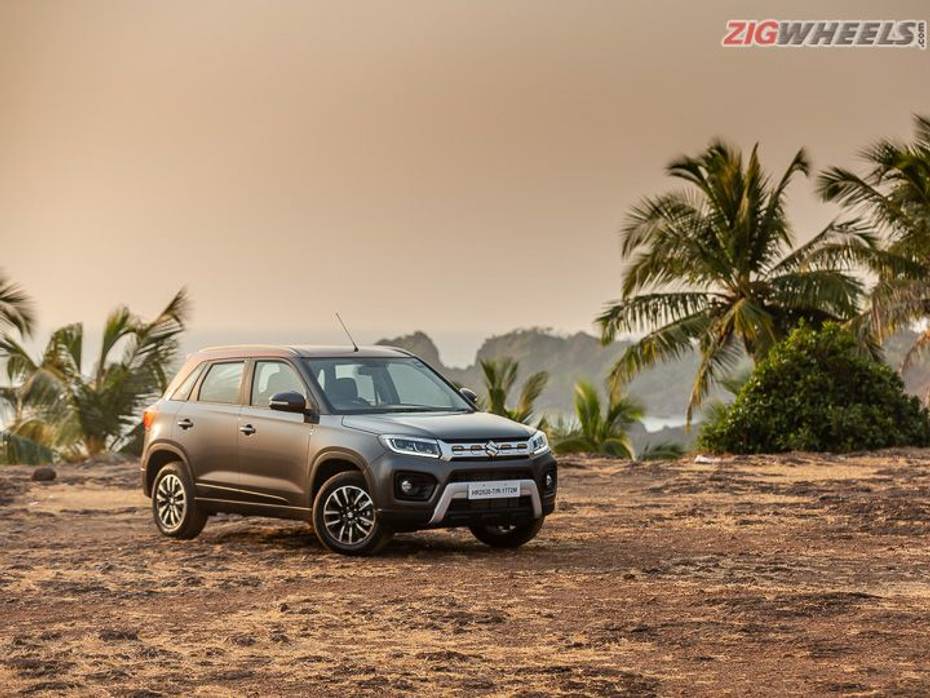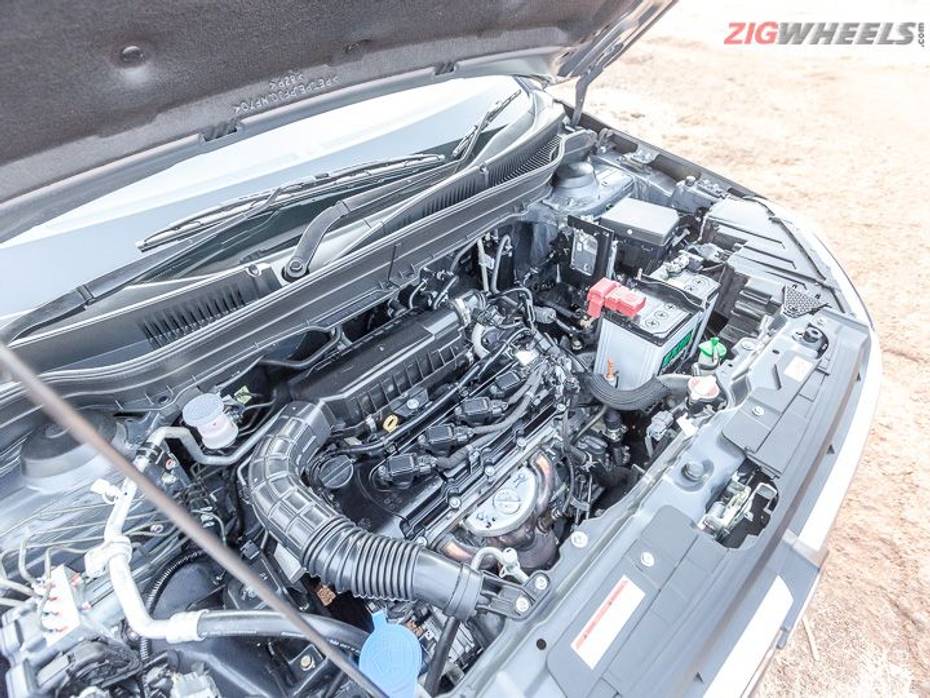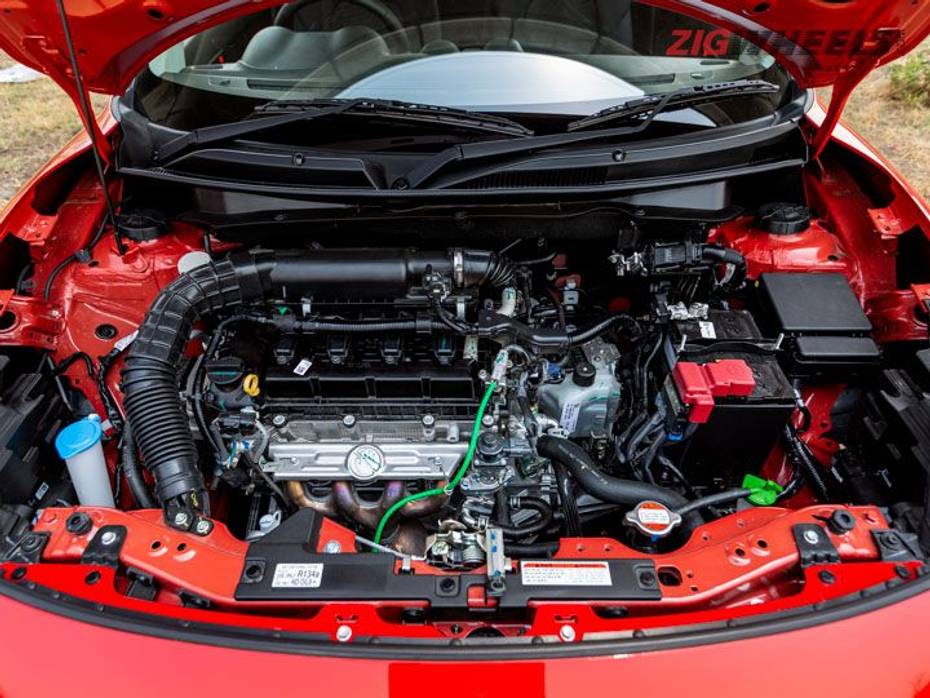
The New Maruti Dzire 2024 Has Been Launched In All Its Glory! Priced...
- Nov 11, 2024
- Views : 11164


We had the opportunity to chat with Mr Shashank Srivastava, Executive Director (Marketing & Sales) of Maruti Suzuki. As is the case with every interaction post the lockdown, this chat was a virtual one. The talks centred on the success of the Vitara Brezza in one of the most hotly contested segments in the Indian car market. And from this discussion, we got his insights into how Maruti achieved this as well as his thoughts on a few other questions we all have been thinking about -- the Jimny, the return of the 1.5 DDiS engine, the Swift Sport, and more.
The success of the Vitaria Brezza

The Vitara Brezza has been one of the bestsellers in the entry-level SUV segment since its debut in 2016. Till 2020, it was powered exclusively by the ageing 1.3-litre DDiS, Fiat-sourced diesel engine, later replaced by the new 1.5-litre K-series petrol. Maruti’s timing seemed perfect considering the market’s slow but steady shift to petrol as the fuel of choice. But Mr Srivastava says this move wasn’t spurred by only a change in fuel preferences.
SS: In the entry-level SUV segment, the competition does not offer a large petrol engine. Most competitors have a 1.2-litre petrol or a 1.0-litre turbo engine. The 1.5-litre petrol engine in the Maruti Suzuki is smooth and powerful, and is preferred over smaller engines. And so it’s not just the pricing of diesel, the higher cost of purchase, but a combination of all these factors that has suited the Brezza.

The 1.5-litre K-series petrol then is one of Vitara Brezza’s strengths. But it is also a financial burden on this sub-4 metre vehicle because it loses out on the GST benefits that the government affords to small cars. So after working on this model for a year, how have the finances worked out from a manufacturer’s point of view?
SS: So there was saving with the diesel engine going out of the picture and a less expensive petrol engine taking its place. But there was also the loss of the GST benefits, which are quite substantial -- 29% vs 43% without the benefits. And these roughly balanced out, and in that sense, the Brezza still maintains a very good value equation for the customer. And what we found is that customers in the SUV segment are looking for a larger engine as well as a smoother drive. In India, most of these vehicles are not for off-roading purposes and are used mainly in the city. And it’s the great smoothness of a petrol engine (and especially a large petrol engine) that has gone down very well with our customers.
The Swift Sport

willing to consider, it immediately got us thinking about other such cars we’d like to see ignoring the ‘small car’ constraints. And of course, the first car that popped up in our minds was the Suzuki Swift Sport. Powered by a 1.4-litre turbo petrol producing 130PS and 235Nm, it’s a critically acclaimed pocket rocket. Would they consider this for the Indian market ever?
SS: Who knows, we might be thinking in that direction. So let us see how it goes…
As I watch the recording of this interaction, I can’t help but think that Mr Srivastava is humouring me with this non-committal yet promising answer. Was he just refraining from killing our dreams? But I’m damn sure there was this slight twinkle in his eye as he said it. If they do find some way to give us the Swift Sport, many of us enthusiast would be over the moon. Fingers crossed!
The 1.5 DDiS diesel engine comeback

This brand new Maruti Suzuki engine was launched in 2019 and developed in-house to replace the ageing 1.3-litre diesel sourced from Fiat. While it only made a little more power and torque than the engine it replaced, it did more than surpass its predecessor in refinement and driveability. We drove a Ciaz with this engine straight from Maruti’s Gurgaon Corporate Headquarters all the way back to Pune. Off the bat, it was easy to drive, powerful, and just as efficient as the smaller-displacement Fiat mill. But with the advent of BS6 norms, this engine was sadly discontinued after barely a year of service. Earlier in 2021, word was out there that the 1.5-litre DDiS diesel engine could come back.
SS: The Status remains the same on that front. We had said that we will wait and watch how the market shapes up on the diesel front and then see if a diesel engine is really required. Hatches have less than 0.2% diesel sales, passenger cars including sedans is less than 2%, it’s only in the mid SUV segment that there is still substantial diesel presence. Even in the MPV segment diesel is less relevant, especially with the prices of the Toyota Innova going further up the scale. In fact the diesel Ertiga used to garner 53% of Ertiga sales for Maruti Suzuki and now even with the loss of the diesel engine the Ertiga sales have surpassed the earlier combined (diesel + petrol) Ertiga sales numbers. And this has helped the Ertiga to control 61% of the market compared to the earlier 50% a year ago. So despite dropping the diesel engine we have managed to grow our market share.
The cost of conversion is also a factor, and this is only going to get more expensive to have diesel engines meet the new emissions norms. And eventually, this will become the case for petrol engines as well. At this point, EV powertrains may become more economical to produce. Once the RDE (Real Driving Emission) norms come into place in 2023, it will become even more difficult to have diesel engines pass. So diesel does appear to be losing out but we still have to watch this space for some time.
This sounded like that final nail in the coffin for the poor 1.5 DDiS engine. Again, that’s us trying to read between the lines, but Maruti Suzuki’s official stance is still ‘Wait and Watch’.
The emergence of CNG as a popular choice?
SS: So while we are waiting and watching, it looks like diesel is losing out, and in fact, CNG is actually emerging as the second choice of fuel. Especially in the hatchback and entry-level sedan bracket. Last year, we sold 1.5 lakh CNG vehicles and plan to sell 2.5 lakh CNG cars by the end of this year. We plan to push these numbers up even further in the years to come. This is mostly due to the number of outlets for CNG having increased from a mere 1300 two years ago to 2600 today. In another 4 years, this is expected to grow to 11,000. So there is a huge network of pumps being laid out and promoted by the government of India as well. A relevant example is that in Pune, almost 70% of Wagon R and Celerio sales are of their CNG variants. And in Delhi, is around 50%. So there we find that there is great traction for us. Diesel car options have dropped from 30% to just 17% this year, whileCNG, on the other hand, has grown from less than 0.5% to 5%
Jimny launch date?

Some long-wheelbase test mules of the Jimny have been spotted in Europe. Anything concrete on its debut that you can let us know?
SS: We started production of the Jimny for our export market a couple of months ago, so that work is going on. For the domestic market, we got a positive response after its display at Auto Expo 2020. And so we are currently doing some research on finalising our marketing plans regarding the Jimny. We will let you know once we finalise the plan. Can't comment on any timeline, but we are examining it very closely.

The New Maruti Dzire 2024 Has Been Launched In All Its Glory! Priced...

Upcoming Maruti Suzuki Cars Expected In 2025: e Vitara, Baleno...

5 Things You Need To Know About The 2024 Maruti Dzire Ahead Of Its...

2024 Maruti Dzire: How Quick Does It Go From Naught To 100 Kmph?

Here’s The Top 10 Car News Highlights Of The Past Week

Check Out The 2024 Maruti Dzire’s 7 Colour Options In Images

Suzuki Swift Australasian NCAP Safety Rating Is Out And It's...

2024 Maruti Suzuki Dzire: Individual Exterior And Interior...

2024 Maruti Dzire Chromico & Copperico Accessory Packs Explained In...

Hyundai Venue: A Steed For Every Need
India's largest automotive community
 Hyundai Creta Electric vs Creta ICE: Key Differences And Similarities In Their Interiors!
Hyundai Creta Electric vs Creta ICE: Key Differences And Similarities In Their Interiors!
 2025 Mercedes-Benz EQG 580 Launch Tomorrow: 5 Things You Need To Know
2025 Mercedes-Benz EQG 580 Launch Tomorrow: 5 Things You Need To Know
 Mahindra BE 6 Launched: Price For The Top-spec Variant Is Out!
Mahindra BE 6 Launched: Price For The Top-spec Variant Is Out!
 Mahindra XEV 9e Prices Out! Prices Start At Rs 21.90 Lakh And Top End Costs Rs 30.50 Lakh
Mahindra XEV 9e Prices Out! Prices Start At Rs 21.90 Lakh And Top End Costs Rs 30.50 Lakh
 Toyota Camry
Rs. 48.00 Lakh
Toyota Camry
Rs. 48.00 Lakh
 Honda Amaze
Rs. 7.99 Lakh
Honda Amaze
Rs. 7.99 Lakh
 Audi Q7
Rs. 88.66 Lakh
Audi Q7
Rs. 88.66 Lakh
 Mahindra XEV 9e
Rs. 21.90 Lakh
Mahindra XEV 9e
Rs. 21.90 Lakh
 Mahindra BE 6
Rs. 18.90 Lakh
Mahindra BE 6
Rs. 18.90 Lakh